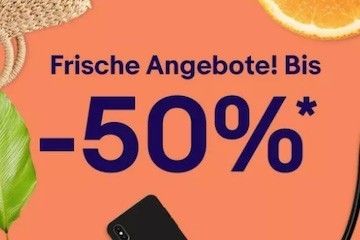Germany hosts Europe’s biggest economy and, with 83.7 million people, its second-largest population, after Russia. It is the fifth-largest ecommerce market in the world and the second-largest in Europe, behind the U.K. Eighty-five percent of the population has Internet access. Germany has one of the world’s best-developed logistics infrastructures and navigated the Covid-19 pandemic better than most European countries. It has limited the damage to its economy and offers a stable environment for ecommerce.
In short, Germany represents a good opportunity for online sales.
According to Statista, which adjusted its forecast to account for Covid-19 impacts, German ecommerce revenues will reach roughly US$82 billion in 2020, a 13 percent increase year-over-year.
Covid-19 Effects
Like other countries, Germany has experienced an uptick in online sales during the pandemic — especially for groceries and pharmacy items — and attracted shoppers who were not previously regular ecommerce customers. The products that are currently flourishing online are food and hygiene products. Online fashion sales have declined.
According to July research from AfterPay Insights, a European pay-after-delivery service, German consumers continued to shift purchases from offline to online in June.
Seventeen percent of German online shoppers say they shopped more online and less in physical stores in June, while 7 percent stated they shopped more in physical stores and less online. German shoppers say they will buy less overall but will do more of their purchasing online in July.
Before the pandemic, online-only merchants dominated ecommerce sales. German brick-and-mortar retailers have been slow to establish an online presence but Covid-19 prompted some to establish websites. The majority of brick-and-mortar retailers are small businesses with fewer than five employees; before the pandemic they saw little reason to sell online. Some of these businesses have formed small local online marketplaces that cooperate to deliver groceries and other goods locally.
Online Shoppers
German consumers prefer to shop from ecommerce sites that are in their native language and have a “.de” domain, according to the “Germany 2020: Ecommerce Country Report” from RetailX. Shoppers prefer detailed product descriptions. Cross-border sales are lower than in other European countries, with more consumers purchasing from national retailers. In 2019, 37 percent of German consumers bought from sellers abroad according to RetailX, mostly from China.
Electronics and apparel/accessories are the products Germans most frequently purchase online.
Laptops are the most popular devices for shopping online, with 58 percent of shoppers using them in 2019, according to RetailX. Smartphones have overtaken desktop computers to become the second most popular way to shop online in Germany, with 49 percent of respondents saying they use smartphones.
Germans like to return items. Any online merchant selling in Germany should be prepared for a high return rate. Apparel returns are roughly 40 percent, for example. German law requires retailers to offer a 14-day return period.
Payments
Another unique aspect of German ecommerce is the large number of consumers who pay via invoice. This aligns well with the lenient return policy. Invoicing means that consumers can receive and examine their goods without having to pay upfront. They can decide whether they want to keep or return them before paying. In 2019, 81 percent of German businesses still offered payment on account or invoice.
Gradually, Germans are adapting to digital payments, however. According to the Ecommerce Foundation, PayPal now accounts for 56 percent of online payments with invoices at 26 percent.
Major Online Sellers
Marketplaces dominate ecommerce in Germany, accounting for 40 percent of online revenues.
Amazon.de, which serves Germany, Austria, Belgium, Switzerland, and The Netherlands, accounts for about 35 percent of the German ecommerce market, according to RetailX. Seventy percent of Amazon.de shoppers pay by invoice, although 67 percent are now also using Amazon Pay and PayPal, according to research by German ecommerce association Handlerbund. The estimated monthly traffic on Amazon.de is 434.5 million visits.
eBay.de is the second most visited online etailer in Germany, with 25 percent of the total monthly visits and 22 percent of marketplace sales. It, too, offers payment terms via invoice. Another site, eBay Kleinanzeigen, focuses on used goods, memorabilia, and collectibles, which are popular among German consumers. eBay Kleinanzeigen has a 14 percent share of German marketplace sales, according to RetailX.

eBay.de has 25 percent of total marketplace visits in Germany and 22 percent of marketplace sales.
Otto. Founded in 1949 as a mail-order company, Otto is the leading German marketplace for home, fashion, sports, and electronics goods. It offers roughly 2 million products from around 5,000 brands, including its own label. The Otto Group operates in over 20 countries. Otto offers personalized service, with customer helplines staffed by real people. It also runs a logistics service.
Zalando. Headquartered in Berlin, Zalando offers clothing, shoes, sportswear, and beauty products in 17 European countries. It’s one of the best-known online sites in Germany, especially among females. Merchants and brands selling on the Zalando marketplace are increasing, with 250 signed up on the Zalando Partner Program. The company intends to bolster its third-party sales with Zalando Fulfillment Solutions and Zalando Marketing Services.
MediaMarkt. Founded in 1979 as a brick-and-mortar store, MediaMarkt is a German electronics seller, similar to Best Buy in the United States. It now operates in 12 other countries.
Notebooksbilliger primarily sells electronics and related media, maintaining a large online market share.
Lidl, a discount supermarket chain offering groceries and other goods, has become a household name across much of Europe. It has 10,000 stores across Europe and the United States. Its online store sells clothing, sporting goods, and home improvement products as well as groceries.







